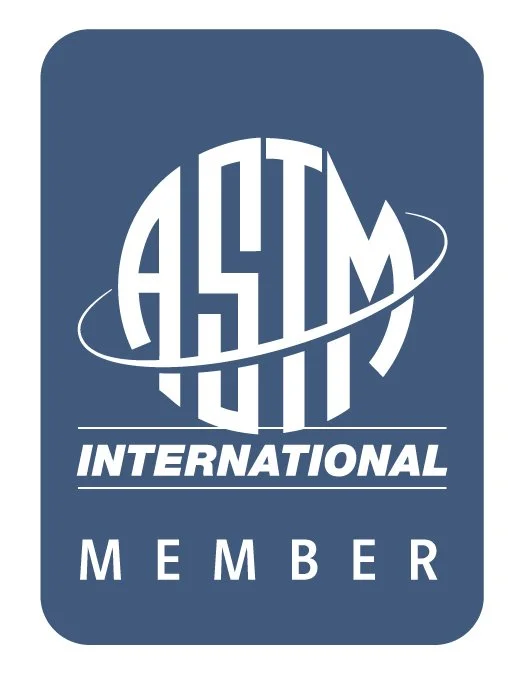
Custom Test Equipment for the Battery & Aerospace Industries
SERVICES
We find and offer innovative services
Repairs
Calibration traceable to NIST with recorded data
PRODUCTS
We’ve built partnerships that will give our clients better products for their markets.
Battery
Low Resistance Test System
Product ID: 9100-2 Low Resistance Test
The Model 9100-2 measures the resistance of single or multiple battery separators quickly and accurately when used with our Model 9000-9100 Electrolyte Test Bath. This system uses a 4-terminal measurement technique which cancels the effects of electrode/electrolyte potentials.
The 9100-2 minimizes self-heating with test currents of 10 or 100 ma at a 10% duty cycle. An offset test switch enables the voltmeter to monitor any bath polarization. Front panel switches control standby/operate, offset test, and reset. Preset (digital offset) is standard, as is range scaling which gives direct readout of resistance per unit area. Also standard is the remote operation switch box.
Construction: Anodized aluminum chassis, circuitry uses ICs and discrete components. 2 oz copper, epoxy fiberglass PC boards with gold plated contacts. All circuits plug into main chassis.
Size: 5.25"H x 8.5"W x 12"D (13.3 cm x 21.6 cm x 30.5 cm), aluminum cabinet. Acid and base resistant finish on covers and panels.
Power: 120v or 240v, 50-400Hz standard. 40 va. max.
Standard Features:
O. "Offset" displays the difference caused by separator removal.
RO. Remote operation switch box protects main chassis from acid.
RS. Range scaling provides readout in resistance per unit area.
Options:
HS. Hi resolution readout to .01 milliohms for all aperture sizes and electrolytes.
When ordering please specify the voltage required and the size of your bath aperture for correct range scaling. We recommend larger apertures for ribbed separator tests. We recommend 9000-9100A Electrolytic Bath with its stable, higher barrier resistance for use with this system. Use with acid and base electolyles.
Voltage Selection:
120v
240v
Aperture Selection:
RSE-2 (2 sq. inch bath aperture)
RSE-5 (5 sq. inch bath aperture)
RSM-20 (20 sq. inch bath aperture)
RSM-50 (50 sq. inch bath aperture)
Specifications
Readout: 0000 to +/-12000 with flashing overrange indicator.
Ranges: 100 mv, 1 v, 10 v, 1 Kohm, 100 ohm, 10 ohm, 1 ohm and 100 mohm full scale. The 100 mohm and 1 ohm ranges are used to measure separator resistance. The higher ranges are used to test the barrier resistance of the bath.
Resolution: 0.01% of full scale (i.e. .1 milliohms on the 1 ohm range).
Timing: Test timing is crystal controlled, 33-1/3 msec or 166.67 msec for 60 Hz systems, 50 or 250 msec for 50 Hz application, depending upon the range. Circuit is operative only 10% of the time to minimize bath heating. (10% duty cycle)
Accuracy over 10 degree C range into standard resistor: 0.05% of reading, +/-1 digit. Electrolyte resistance may vary 1% or more per degree C. We suggest the Palico 9001 Temperature Controlled Bath for critical applications.
Voltmeter zero: 2 microvolts +/-0.25 digits per degree C.
Current generator zero: less than +/-0.01% of full scale, +/-0.001% per degree C.
Isolation: The bipolar current source, voltmeter, digital output and chassis are isolated to prevent erroneous readings.
Ranging: Manual with 100 milliohm, 1, 10, 100 and 1 Kohm, 100 mv, 1 v and 10 v full scale.
Display: 0.5" LED type. 4-digit, non-blinking, stored display.
Input: 5-wire, rear mounted, MS type 3102-14S-6S connector for resistance measurement. Connects directly to Palico 9000-9100 Bath. Front panel BNC for voltmeter input. 6 foot cable with solder lug terminations. Rear panel connections for current output & voltmeter input. "Standby" connects rear panel reference resistor, removing all bath connections for self test. Power failure switches system to 'standby.'
BCD output: 1-2-4-8 code: Rear mounted 36 pin connector (57-40360 Blue Ribbon type). Logic 0=0 +/-0.5 v @4 ma; Logic 1 = 3.5 +/-1v @300 ua.
Print command: Logic "1" signal indicates data available within 100 usec after completion of measurement.
Temperature: -20 degrees C to +55 degrees C operation; 85 degrees C storage
9000-9100 Bath
Product ID: 9000-9100
The Model 9000-9100 Bath is arranged in a 4-terminal electrical configuration and is constructed of acrylic plastic materials that are suitable for common battery electrolytes.
Carbon electrodes are used for both sulfuric acid electrolytes and potassium hydoxide solutions. The separator material forms a gasket between two plastic panels which support the separator and position it for measurement. One of these panels is moveable and is controlled by a lever which opens and closes the test area for insertion and removal of the separator. The lever handle is located above the bath with sufficient clearance for operation with a gloved hand. The bath geometry allows accurate measurements to better than 0.1% of bath resistance. Covers are provided to limit evaporation and to minimize carbon dioxide contamination of potassium hydroxide electrolytes.
Bath size is 7.5" wide (19 cm.), 12" long (30.5 cm,), 5" deep (12.7 cm.) with an aperture (2 sq. inches, 20 sq. cm., 5 sq. inches or 50 sq. cm.) selected for the customer's requirements.
A plastic carrier is used to enable tests of very thin or very flexible separator materials. A perforated plastic sheet is available for use as a calibration standard. A flexible plastic barrier panel is included to verify bath condition with aging.
All hardware is type 316 stainless steel. Wire connections to the 9100-2 System are teflon insulated type 316 stainless steel wire to prevent corrosion from the electrolyte.
Temperature Controlled Water Bath
Product ID: 9001 Temp Controlled
The Palico 9001 Temperature Controlled Water Bath is used to maintain the test cell at a fixed temperature to eliminate temperature correction in measurement of separator resistance.
The front panel controls on the 9001 Bath provide adjustment of the temperature of the water bath to a fraction of a degree F over the range from ambient temperature to 100 deg. F (37.8 deg.C). An over-temperature cutout is set at 130 deg. F (54.4 deg. C) and will prevent damage to the Model 9001 in the event of failure of the temperature controller. Operation in a cold room will allow test to near 0 deg. F (-18 deg C).
This bath is constructed using acid and base resistant materials. Type 316 stainless steel is used for the inner tank, for the drain valve, and for the mounting screws. The outer case is constructed of gray PVC with a clear Type 1 PVC (Boltaron) top which has excellent resistance to concentrate s sulfuric acid and potassium hydroxide which are commonly used for electrolytes.
Bath size is 12" high (30.5 cm) x 17" wide (43 cm.) x 20" long (51 cm.) Power 105-125 volts, 50-400 Hz. 230 volt operation, optional.
Remote Control
Product ID: 9100-2 Remote Control
The Palico 9100-2 system utilizes modern day technology to measure the electrical resistance of separators used in acid and alkaline batteries. Resolution is 0.1 milliohm for 2 square inch and 20 square centimeter apertures and 0.01 milliohm for the 5 square inch and 50 square centimeter apertures. Optional scaled digital display to tenths of milliohms makes possible rapid tests for quality control purposes in the lab or on the production line.
The measuring system is combined with a precision engineered electrolytic bath for soaking, handling and testing of separator materials. The 9000-9100 Bath and accessories allow tests of individual or multiple separators from .001" to .375" (.0254 mm to .95 cm) thick.
Reversing polarity test currents simulate battery conditions and are kept low, operating at 10% duty cycle to prevent heating and polarization of the test bath. A 4-terminal "Kelvin" measurement method is used to improve accuracy by extracting data without regard to the quality of the connection the test electrodes make to the electrolyte. It also cancels the effects of offset or battery potentials.
The bipolar current source and the voltage measuring circuits are isolated from each other and any control or output circuits. This isolation prevents erroneous or unstable readings when operating near welding stations or large electrical controllers.
A typical system will have a test cell resistance from 80.00 to 400.00 milliohms, depending upon aperture size and the temperature and composition of the electrolyte used. An offset option is offered to digitally subtract the test cell reading, allowing direct readout of the resistance change caused by the separator. The remote control box uses booted toggle switches for system control allowing easy operation with a gloved hand.
A perforated polypropylene separator stand is available to verify test techniques and system operation. It can be mailed from plant to plant if necessary to aid in correlation of test data.
Aerospace
Angle Position Indicator (Discontinued) Product ID: 9035 (Discontinued)
Model 9035 Single Channel Angle Position Indicator System. Contains a signal source and single-speed synchro/resolver to digital converter. Angular accuracy +/-6' (.1°) standard. Options to +/- 11" (.003°). Signal source regulated carrier 1 va, .05% frequency stability. 400 Hz standard carrier. Other frequencies available. Handshake interface with data buffer available. +/-180° or +/- 0-360° display.
ABOUT US
Caltronics Design & Assembly, Inc has recently purchased the products and intellectual property rights of Palico Instruments Laboratories, Circle Pines, MN, a leading manufacturer of custom electronics test equipment for the battery and aerospace industries. Palico has been serving those industries for over 30 years and Caltronics is excited to have the opportunity to carry on their tradition of excellent products and service.
MEMBERS
American Society for Testing and Materials (ASTM)
Battery Council international (BCI)
We Can’t Wait to Work With You!
If you have an idea that you want to pursue, Contact Caltronics to schedule a time with one of our design engineers.
We would love to hear from you and learn about your idea; let’s design something great together.










